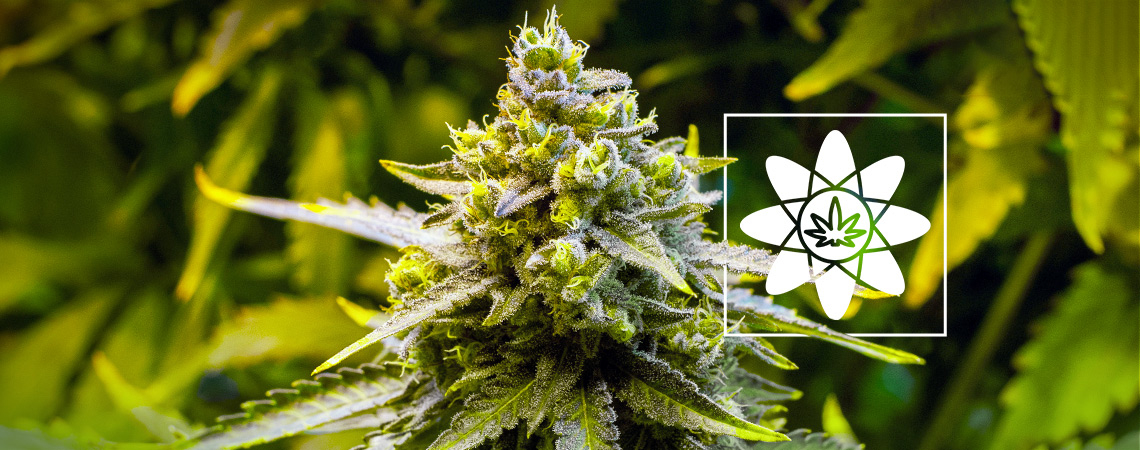
What Is The Entourage Effect?
A product of the 1990s, the theory of the entourage effect is arguably one of the hottest topics of discussion in the cannabis world. Click here for an overview of the entourage effect and what science has to say about it.
If you're into cannabis, you're probably familiar with THC and CBD—one gets you high, while the other is used for holistic purposes. But the truth is that cannabis and its constituents are extremely complex. This humble plant, which might be mankind's oldest crop, contains countless different active compounds, each with unique mechanisms of action and the ability to deliver novel effects.
Moreover, there's research to show that cannabis compounds such as THC and CBD, as well as terpenes, can synergise (or interact) with one another in ways that may alter, augment, or temper their effects. This theory is known as the entourage effect and may play a key role in understanding the unique effects of the cannabis plant. In this article, we'll explore the entourage effect (a theory dating back to the 1990s) and assess how its principles might help to guide the way we choose to use weed.
The entourage effect — One of cannabis' great mysteries
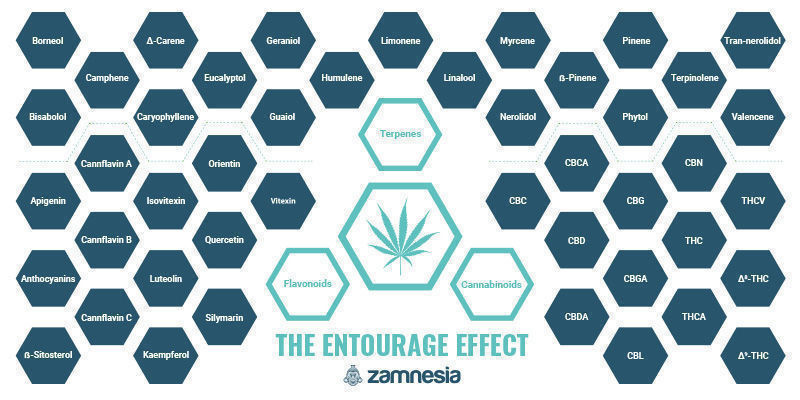
The term "entourage effect" was coined by the late, great father of cannabis research, Dr Raphael Mechoulam. Mechoulam is often cited as one of the greatest cannabis researchers ever, thanks to his isolation and careful study of compounds like THC, CBD, and more. In 1998, Mechoulam along with Shimon Ben-Shabat and a team of other researchers discovered that glycerol, a structural component of fatty acids, could enhance the activity of 2-AG—one of the main cannabinoids produced naturally in the body (Ben-Shabat et al., 1998).
While this fact might not turn heads at your next dinner party, it meant a lot for Mechoulam and his team, as well as for the cannabis researchers who would follow in their footsteps. Essentially, this study found that the action of endocannabinoids can be altered by the presence of other compounds; in the above case, by something as simple as glycerol. It was from this study that the theory of the entourage effect was born. Today, it's arguably still one of the most hotly debated topics regarding cannabis.
CBD and terpenes — The journey beyond THC
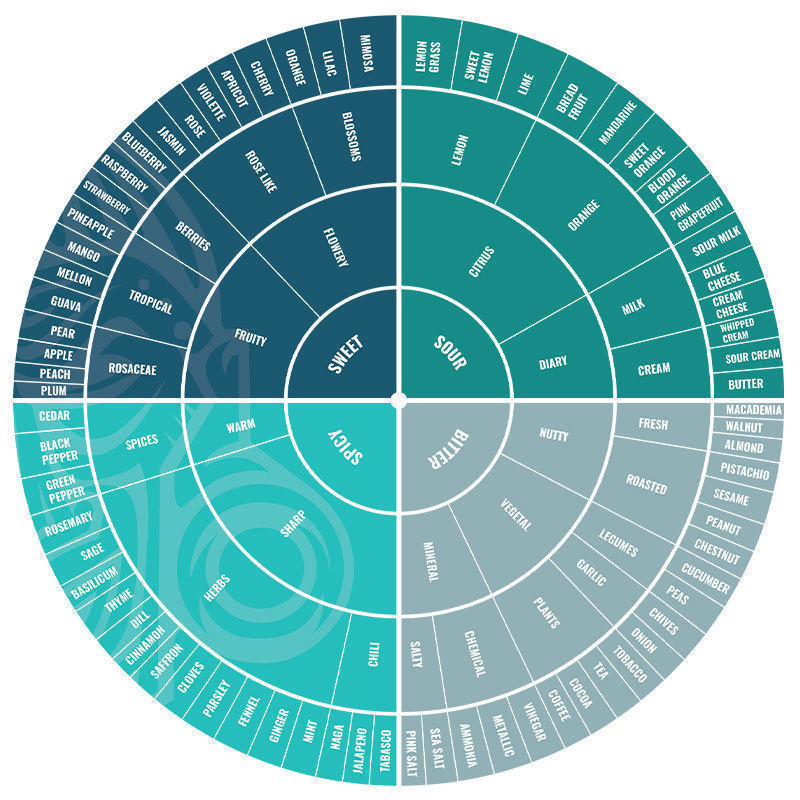
Ever since it was identified as a main component of hash in 1964 (Gaoni & Mechoulam), and the CB1 receptor as its main biological target (Devane et al., 1988), THC has been thought of as the "gateway" to understanding the cannabis plant and its novel properties. After all, by understanding a plant's main constituent, you should glean a fairly solid understanding of how to use that plant for optimal effect, right? If only cannabis were so simple.
Ben-Shabat and Mechoulam's finding laid down the groundwork for a theory that, at its core, states something like this: the cannabinoids that are present in cannabis and the human endocannabinoid system may synergise with each other and/or other compounds and thereby deliver augmented, diminished, or altered effects. Suddenly, just studying THC might not seem such a viable way to understand a plant with so many peculiar chemical constituents.
Since its formulation in 1998, the theory of the entourage effect has been hot on the lips of cannabis researchers and enthusiasts. On the one hand, researchers like Dr Ethan Russo have published extensive works (Russo, 2011; Russo & Guy, 2006) exploring the potential ways that cannabinoids, terpenes, and other cannabis compounds may interact both within the plant and in the body. In “Taming THC…”, for example, Russo cites studies showing that alpha-pinene (a terpene that gives weed a fresh, piney scent) might help to preserve acetylcholine, a compound that can promote the formation of memories. From there, Dr Russo argues that cannabis rich in pinene may have less of a pronounced negative effect on a person's short-term memory and concentration.
But the entourage effect is more than just a hypothesis. More recent research shows, quite literally, that cannabinoids, terpenes, and other cannabis compounds can synergise. One prime example is that of CBD's ability to mitigate some of the negative side effects of THC (which is why recreational users and medical patients report using CBD to relieve feeling "too high"). By blocking cannabinoid receptors, CBD effectively reduces our exposure to THC and can help to reduce some of the characteristic unpleasant effects associated with cannabis, such as paranoia or deep sedation. As a result, Ethan Russo has strongly advocated for the use of both CBD and THC in clinical settings (2006).
More recently, Australian researchers have also managed to demonstrate the entourage effect in action. Anderson et al. (2021) compared the effectiveness of delivering cannabidiolic acid (or CBDA, a precursor molecule from which CBD stems) to mice, both in isolation and in the presence of other cannabinoids (in the form of a full-spectrum hemp extract). The study found that the mice taking the full-spectrum extract had 14 times more CBDA in their bloodstream than the mice given only isolated CBDA.
"Hemp extracts provide a natural vehicle to increase the absorption of CBDA into the bloodstream via the interaction of cannabinoids at specific transport proteins in the gut”, concludes Associate Professor Jonathon Arnold from the Lambert Initiative for Cannabinoid Therapeutic, one of the lead authors of the study. "Our study shows that different cannabinoids interact to alter plasma levels of cannabinoids themselves due to what we call a ‘pharmacokinetic entourage’ effect" (Strom, 2021).
Navigating uncharted territory

Though the theory of the entourage effect dates back to the 1990s, more research is needed to fully understand this complex concept. In fact, the argument that cannabis compounds synergise, and that this in itself is key to understanding the plant's effects, gets a fair share of scrutiny.
“The lay public has really taken on the notion of the entourage effect, but there’s not a lot of data”, says Margaret Haney, a cannabis researcher and neurobiologist at Columbia University in an interview with Scientific American. “The cannabis field can say anything and it does. I’m not against marijuana. I want to study it carefully. We know it can affect pain and appetite but the large majority of what’s being said is driven by anecdotal marketing" (Chen, 2017).
Unfortunately, performing this research is no walk in the park. Some of the challenges faced by researchers wanting to explore the entourage effect include:
- The dominance of THC: Most cannabis strains have been bred to be rich in THC, though some CBD-rich cultivars exist. That said, most modern cannabis strains produce only trace amounts of secondary cannabinoids (such as CBG, CBC, THCV, and CBN), making it difficult to study these other compounds, which may hold key information about how cannabis delivers its unique effects.
- Funding: All scientific research relies on funding, which can be challenging to secure when studying a narcotic plant.
- Legality: The ability to study cannabis and its constituents in earnest requires access to high-quality plants/plant material and the ability to handle samples, which is not always allowed as cannabis is still a tightly controlled substance in most parts of the world. The doors are slowly opening for cannabis researchers, but there are still plenty of legal hurdles.
The entourage effect: FAQ
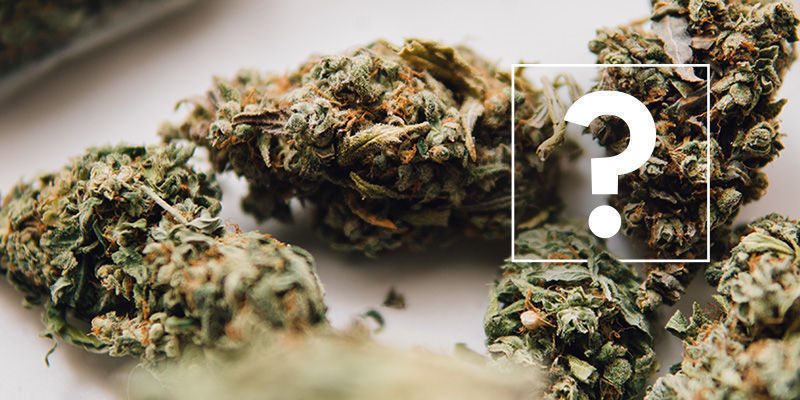
The entourage effect is still a hot topic among cannabis enthusiasts, and both recreational smokers and medical patients have a lot of questions about how it might affect their experience with weed. Below, we'll take a closer look at some of your burning questions regarding the entourage effect.
What does the entourage effect feel like?
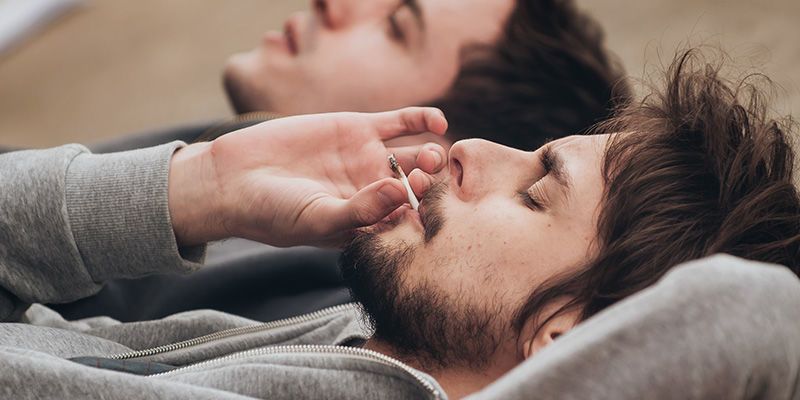
THC-rich cannabis (as well as pure THC present in extracts or oils) is known to produce a strong, intoxicating high that can be overwhelming to some people (especially those new to cannabis or people who are particularly sensitive to its effects). Cannabis containing notable amounts of other cannabinoids, on the other hand, is often described as delivering more "balanced" effects that are less intense and less likely to produce the same level of intoxication. This is one of the main reasons why different varieties of cannabis can cause such different effects.
Does the entourage effect get you high?
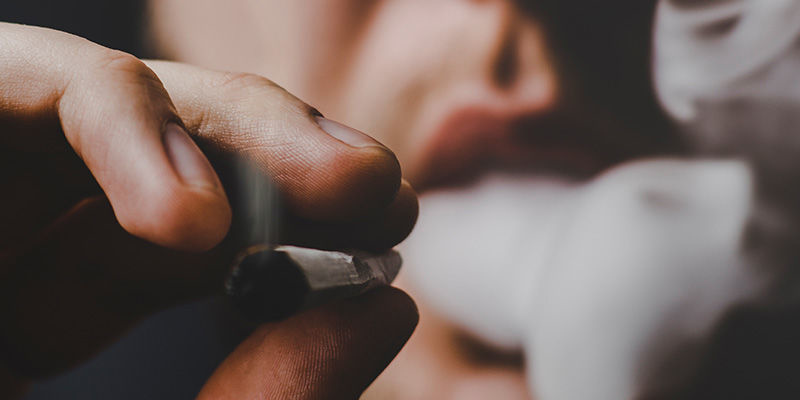
Whether or not the entourage effect produces the typical sense of intoxication associated with taking THC depends on the chemical compounds your body is exposed to. In other words, if you're taking a full-spectrum oil that's predominantly rich in THC, you're definitely going to get high. Alternatively, if you take hemp (either in flower or extract form) that's rich in other cannabinoids—say CBD—and contains only trace amounts of intoxicating THC, you might not feel intoxicated (though this will depend on your tolerance). Cannabis with a close balance of THC, CBD, and other compounds will usually get you high, but tends to produce a more balanced effect than cannabis that mainly contains THC.
How to experience the entourage effect
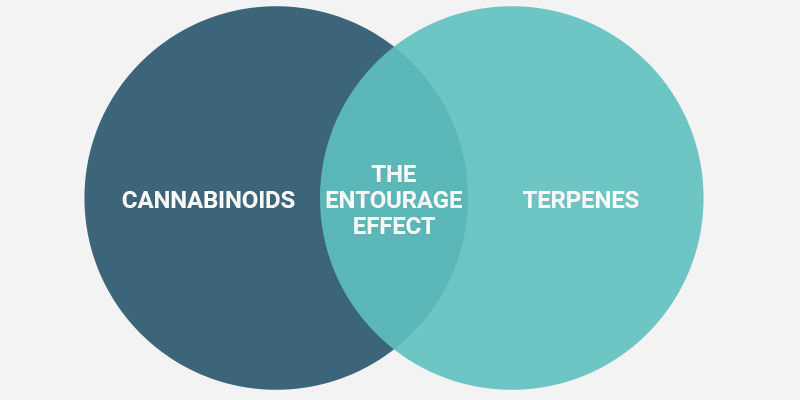
Arguably one of the easiest ways to feel the entourage effect is by taking THC and CBD together. If you're familiar with the effects of THC, you'll know that high doses of this compound can cause some unpleasant effects, particularly:
- Anxiety
- Negative ruminations
- Paranoia
- Depersonalisation
- Cannabis-induced psychosis (in some cases)
Taking CBD together with THC is a great way to potentially prevent some of these side effects and to experience what some users describe as a more "balanced" high. Studies show that CBD can hinder the degradation of anandamide, a key endogenous cannabinoid with a typically short lifespan that naturally binds to cannabinoid receptors. The extended presence of anandamide, therefore, may help to prevent THC from binding to cannabinoid receptors, lowering our exposure to it (Niesink & van Laar, 2013). Moreover, CBD's ability to interact with 5-HT1A serotonin receptors may also help to explain the compound's anxiolytic influence and possibly its ability to reduce some of the anxiety and fear responses produced by a THC high (Russo et al., 2005).
Another way to explore the effects of the entourage effect for yourself is by actively searching out cannabis strains with more balanced cannabinoid profiles. Though most cannabis strains are selectively bred to contain high amounts of THC, there are some varieties out there with more diverse profiles. Strains containing both THC and CBD are relatively easy to find, and some seed banks also sell varieties rich in cannabinoids such as CBG, THCV, and more. Alternatively, look into full-spectrum cannabis tinctures and extracts for other ways to possibly experience the entourage effect. Most users describe the effects of cannabis rich in multiple cannabinoids as more balanced than those of varieties predominantly rich in THC.
Final thoughts on the entourage effect — Weed's greatest mystery
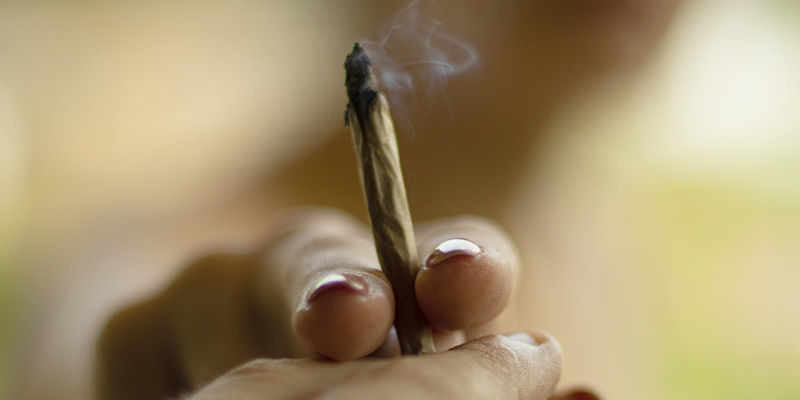
The entourage effect is a theory first described in the late 1990s by an Israeli research team led by Raphael Mechoulam. The hypothesis essentially states that cannabinoids act differently in the presence of other compounds than in isolation. Naturally, since the discovery of this potential synergy between the cannabinoids and terpenes in weed, cannabis researchers and enthusiasts have been eager to see how this might affect the way we use cannabis both recreationally and medicinally. Could the entourage effect help recreational users offset some of the negative side effects of THC, for example? What does the entourage effect mean for medical users; could it be key to unlocking a deeper understanding of cannabis' potential therapeutic effects, or help you elevate your enjoyment of a joint? Unfortunately, we don't yet have answers to all of these questions, but ongoing research into the entourage effect is promising, to say the least.
- Ben-Shabat S, Fride E, Sheskin T, Tamiri T, Rhee MH, Vogel Z, Bisogno T, De Petrocellis L, Di Marzo V, & Mechoulam R. (07/17/1998). An entourage effect: inactive endogenous fatty acid glycerol esters enhance 2-arachidonoyl-glycerol cannabinoid activity - https://pubmed.ncbi.nlm.nih.gov
- Chen, & A. (2017-04-20T10:45:00+00:00). Some of the Parts: Is Marijuana's "Entourage Effect" Scientifically Valid? - https://www.scientificamerican.com
- Cuttler C, Spradlin A, & McLaughlin RJ. (08/01/2018). A naturalistic examination of the perceived effects of cannabis on negative affect - https://pubmed.ncbi.nlm.nih.gov
- Devane WA, Dysarz FA, Johnson MR, Melvin LS, & Howlett AC. (1988 Nov). Determination and characterization of a cannabinoid receptor in rat brain - https://pubmed.ncbi.nlm.nih.gov
- Ethan B Russo. (2011, August). Taming THC: potential cannabis synergy and phytocannabinoid-terpenoid entourage effects - https://www.ncbi.nlm.nih.gov
- Gaoni, Y., & Mechoulam, R. (1964). Isolation, Structure, and Partial Synthesis of an Active Constituent of Hashish. Journal of the American Chemical Society - https://pubs.acs.org
- Johnson JR, Burnell-Nugent M, Lossignol D, Ganae-Motan ED, Potts R, & Fallon MT. (2010 Feb). Multicenter, double-blind, randomized, placebo-controlled, parallel-group study of the efficacy, safety, and tolerability of THC:CBD extract and THC extract in patients with intractable cancer-related pain - https://pubmed.ncbi.nlm.nih.gov
- Mayo Clinic. (12 januari 2024). Depersonalization-derealization disorder - Diagnosis and treatment - Mayo Clinic - https://www.mayoclinic.org
- Pivik RT, Zarcone V, Dement WC, & Hollister LE. (1972 May-Jun). Delta-9-tetrahydrocannabinol and synhexl: effects on human sleep patterns - https://www.ncbi.nlm.nih.gov
- Raymond J. M. Niesink, & Margriet W. van Laar. (2013). Does Cannabidiol Protect Against Adverse Psychological Effects of THC? - https://www.ncbi.nlm.nih.gov
- Ruby S. Grewal, MD, Tony P. George, MD, & FRCPC. (July 14, 2017). Cannabis-Induced Psychosis: A Review - https://www.psychiatrictimes.com
- Russo E, & Guy GW. (2006). A tale of two cannabinoids: the therapeutic rationale for combining tetrahydrocannabinol and cannabidiol - https://pubmed.ncbi.nlm.nih.gov
- Russo EB, Burnett A, Hall B, & Parker KK. (2005 Aug). Agonistic properties of cannabidiol at 5-HT1a receptors - https://pubmed.ncbi.nlm.nih.gov
- Strom, & M. (2021, July 22). ‘An entourage effect’: new clues on how low-dose CBD products work - https://www.sydney.edu.au
-
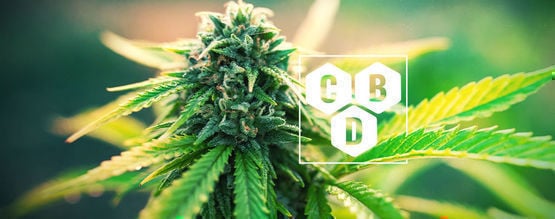 6 min
9 August, 2022
What Is Cannabidiol (CBD)?
CBD has risen to stardom in the supplement world. But what propelled a single plant-derived molecule to such great heights? There are certain elements at play here. Early research has turned out...
6 min
9 August, 2022
What Is Cannabidiol (CBD)?
CBD has risen to stardom in the supplement world. But what propelled a single plant-derived molecule to such great heights? There are certain elements at play here. Early research has turned out...
-
 7 min
15 February, 2022
What Is The Endocannabinoid System?
The endocannabinoid system is a fascinating network of channels and receptors that spans the length and breadth of the human body. Involved in everything from cognition and learning to appetite and...
7 min
15 February, 2022
What Is The Endocannabinoid System?
The endocannabinoid system is a fascinating network of channels and receptors that spans the length and breadth of the human body. Involved in everything from cognition and learning to appetite and...
-
 5 min
22 January, 2021
What Are Flavonoids, Terpenes, And Terpenoids?
Cannabis flowers appear simple to the naked eye. Yet, these sticky green nuggets house a secret, complex world. Not only do they contain over 100 cannabinoids, but they manufacture hundreds of...
5 min
22 January, 2021
What Are Flavonoids, Terpenes, And Terpenoids?
Cannabis flowers appear simple to the naked eye. Yet, these sticky green nuggets house a secret, complex world. Not only do they contain over 100 cannabinoids, but they manufacture hundreds of...
-
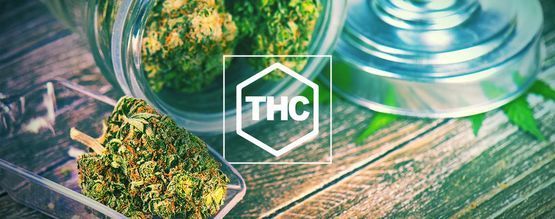 4 min
13 June, 2019
Everything You Need To Know About THC
THC—this simple molecule inspires millions of people to grow cannabis every year. But what exactly is THC? And why do people love it so much?
4 min
13 June, 2019
Everything You Need To Know About THC
THC—this simple molecule inspires millions of people to grow cannabis every year. But what exactly is THC? And why do people love it so much?










 United States
United States










